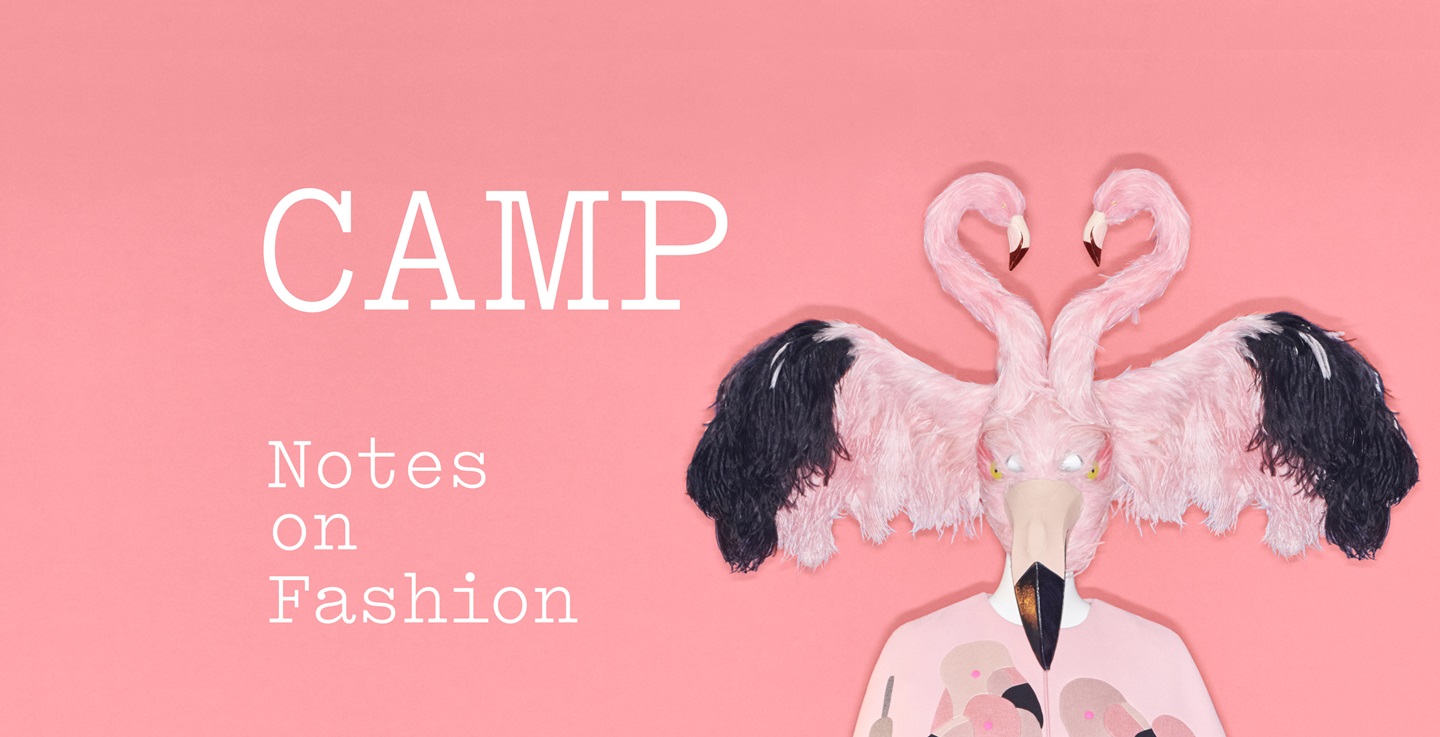A column about NYC museum exhibits to check out on a rainy weekend day. This month: The Metropolitan Museum of Art’s Camp: Notes on Fashion.
Sydney Tiemann

This year’s Met Gala theme required plenty of explanation and is arguably the least readily definable: “camp.” The annual themed fundraising event supports the Met’s Costume Institute, which subsequently puts on a fashion exhibition considering that theme. These exhibits are wildly popular (last year’s “Heavenly Bodies” garnered the most visitors the Museum has ever seen), and this year’s iteration is no exception. I was accompanied on my Saturday afternoon visit by what felt like a thousand others through the narrow bubblegum-pink hallways of the show, each of us coming to our own definitions of what camp means in the context of couture fashion.
The exhibit begins with a history lesson in camp (this does not refer to summer camp or cabins in Maine—an easy misinterpretation). Each gallery defines camp in a distinct and evolving way as the exhibit moves through its history. The first room presents the origins of camp as a verb (se camper in French, meaning to strut about in an exaggerated or theatrical way), highlighting Louis IV and his extravagant manner of dress. Camp is then presented as an adjective as a feature of subversive cross-dressing queer communities and its general capacity to play with masculine and feminine dress codes. We next learn about Oscar Wilde’s camp (a noun) and Isherwood’s camp (subsets of nouns) until we come to a gallery based on Susan Sontag’s cornerstone essay, “Notes on Camp”, and the inspiration for this year’s theme. Thus far the exhibit is borderline didactic but helpful nonetheless for us laypeople.
With all the exhibit’s efforts to define camp, I found it increasingly difficult to do so, yet I was gaining a compounding and mutable picture of its story. This speaks to camp as an elastic and multifaceted concept—something that seems to cause discomfort, as evidenced by the initial confusion after the Gala theme was announced. When we find a notion difficult to encapsulate neatly in one concise satisfying term, we tend to simplify it or shy away from it in favor of black-and-white definitives (often stated confidently in less than 280 characters on a social media platform). What I loved about the camp exhibit is that it challenges that tendency, forcing us to engage with something we can’t perfectly pinpoint. That, and the absurdly campy clothes.
The final gallery is a dim atrium displaying all manners of fanciful haute couture items in the camp aesthetic accompanied by quotes on camp. A ruffly periwinkle Viktor and Rolf ball gown fashioned completely upside down with the neckline at the wearer’s ankles. A Jean Paul Gaultier top hat covered in human hair. Sparkly dresses with belts and creases painted on as a suggestion of functionality but having no function themselves. Tinsel and jewels and feathers and fur and hidden and obvious messages—this is admittedly what most of us came for. It’s the most delightful dress-up box imaginable.
Sontag prefaces her seminal essay with the quip that “to talk about camp is…to betray it,” yet here I was at the end of an exhibit having been told what camp is from at least fifty different perspectives. I felt like by directly engaging with the idea of camp and observing its effects on the fashion world in such an obvious way, we were all betraying some kind of secret about it, thus missing the point entirely. But bringing a nuanced concept to a broader audience is certainly an important undertaking, and I’m glad the Costume Institute chose this theme at a time when we could all use a bit more nuance.
Catch the show before it closes September 8. When you leave, you likely won’t have that satisfyingly definitive answer to what camp is, but you’ll certainly have an expanded understanding and get to witness the fashion world’s whimsical interpretations. If you miss it, consider these other upcoming NYC art exhibitions this fall:
Whitney Biennial 2019 (Whitney Museum of American Art, through Sept. 22)
Yayoi Kusama solo exhibition (David Zwirmer gallery, November)
Nobody Promised You Tomorrow: Art 50 Years After Stonewall (The Brooklyn Museum, through Dec. 8)
She Persists: A Century of Women Artists in New York City 1919-2019 (Gracie Mansion, through Dec.)
Pierre Cardin Future Fashion (The Brooklyn Museum, through Jan. 5)
